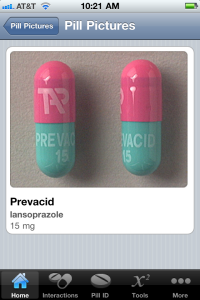
We sometimes associate phone use with those who are self-absorbed and obsessed with their personal business. While we all know a few of those, the fact remains that the iPhone is an indispensable tool for health providers.
Our stereotyping of technology crosses over to other applications as well. It’s assumed that Facebook is a place to clown around. While this may be true, it’s also a serious platform for communication. A colleague once confronted me for using Twitter during clinic hours. He assumed that Twitter’s raison d’etre is to tell the world when you’re eating an egg sandwich. So I gently took the fellow to school.
For health providers using these new tools expect the old guard to believe you’re up to no good.
I recently referenced Epocrates during a patient visit and was called out (tongue-in-cheek) by the patient’s mother for peeking at my phone during the interview. When I disclosed that I was referencing the Epocrates Pill ID feature she became curious and together we looked for the shape, size and color of pill that she was trying to recall. She learned that a doctor referencing a smart phone does not necessarily indicate a rude, distracted provider.
The problem of iPhone attribution error raises the question of how to appropriately integrate technology in the patient encounter. I adhere to the fact that what the patient believes you’re doing is as important as what you’re doing. Until patients understand how smartphones fit into the physician’s (or nurse’s) workflow perhaps we should tell them what we’re doing.
And one last thing. My clinic has signs requesting that cell phones not be used in the exam rooms (the clip art graphic depicts the old Motorola StarTAC phone, my first cell phone in the mid-90’s). Note to self: It’s almost 2011. Cell phones are serious tools for doctors and parents. Got to get rid of the signs.